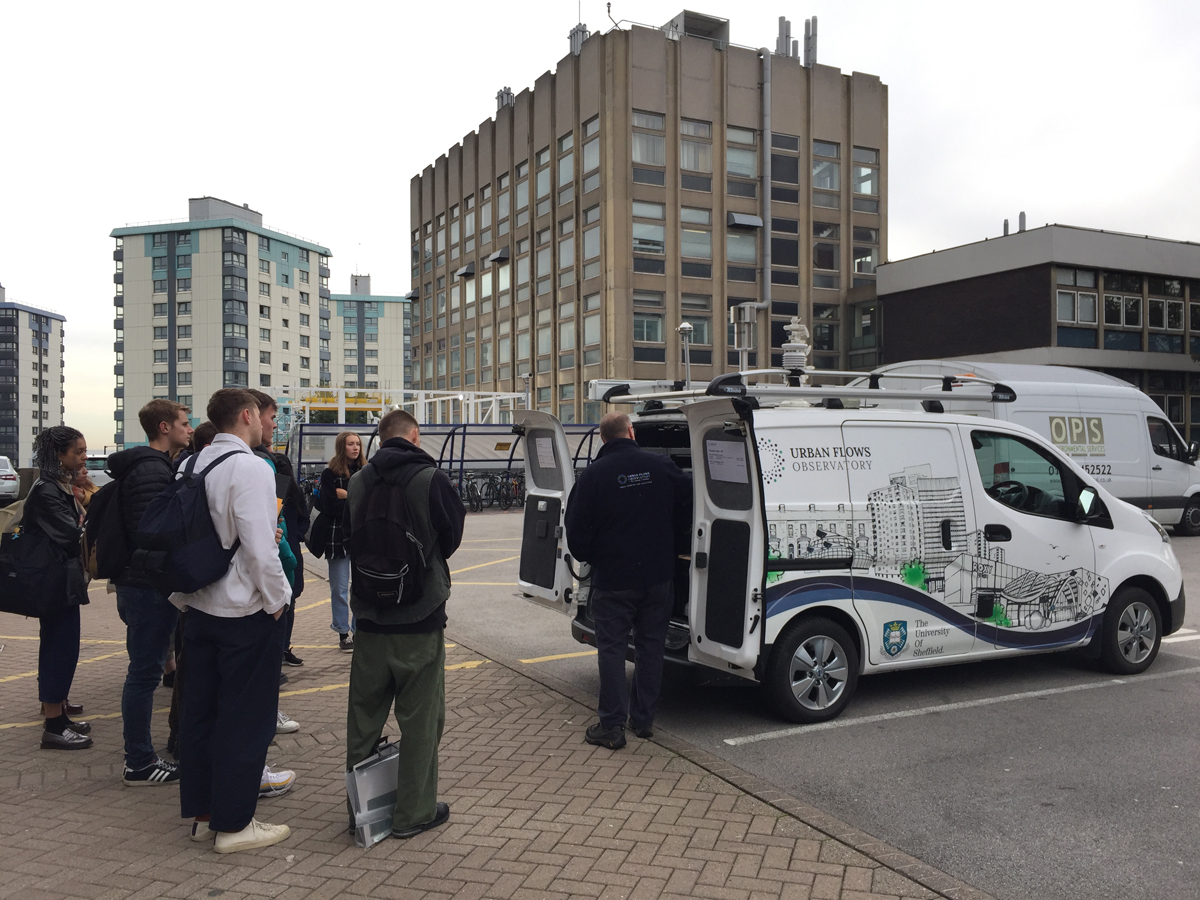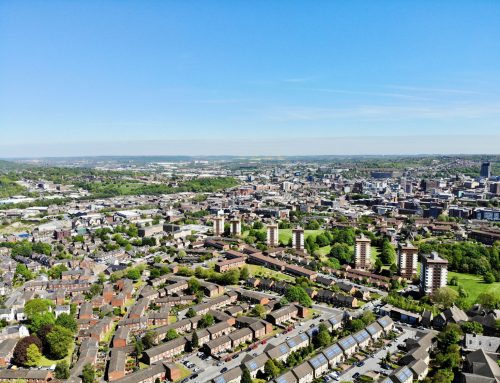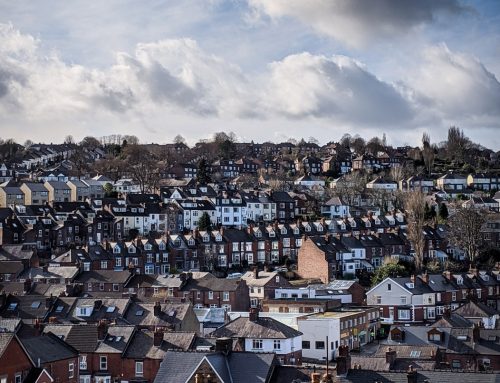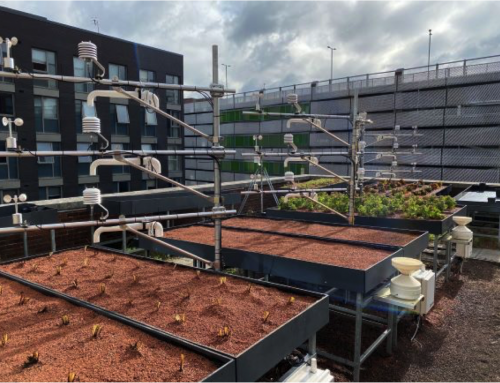Steve Jubb, Urban Flows Observatory and MOBIUS
At the start of the 2019 academic year, the Urban Flows Observatory were invited to get involved on a project with the School of Architecture at the University of Sheffield. Always keen to find ways to share our work with a new and eager audience, we readily accepted.
For their first project of Year 2, the architecture students were tasked to design a small building set in a landscape. They were given an interactive task as a starting point and required to address the theme of ‘Climate’.
Focus on ‘Breathe’
The interactive starting point for one group of students was ‘Breathe’. The Urban Flows Observatory approached this concept through the very real, very current issue of air quality.
Steve Jubb, Chief Technical Officer at the Urban Flows Observatory, met the group to introduce them to the subject of air quality and give an overview the work done by the Observatory. Steve’s presentation gave the architecture students valuable access to the full range of equipment used by the Observatory to measure air quality; from the low cost, low tech right through to the highly specialised Urban sensing vehicle, MOBIUS.
The students then set off to design a small educational facility that would promote the issue of air quality and highlight the work undertaken by the Urban Flows Observatory on this issue.
A theoretical site in Tinsley was chosen as the location for this educational outpost, an area within Sheffield known for issues around poor air quality.
Many of the students chose the equipment presented by Steve as a starting point for their designs, whilst others investigated the physical act of breathing and the effects of inhaling substances that contribute to poor air quality.
The Student Projects
A few of the students from the group really stood out for successfully linking the development of their projects to the equipment demonstrated by the Observatory, and using this as a starting point and vehicle for their final design.
Thomas Matthews and Patrick Gurmin were inspired by the simplest and most low cost air quality monitoring sensors presented, (based on the German open source Luftdaten). They used the simple, DIY technology to inspire both their design outcome and graphic presentation, which encompassed ideas of low tech, self-assembly and instruction manuals.
Below you can see some of the pages from Thomas and Patrick’s final submitted project.
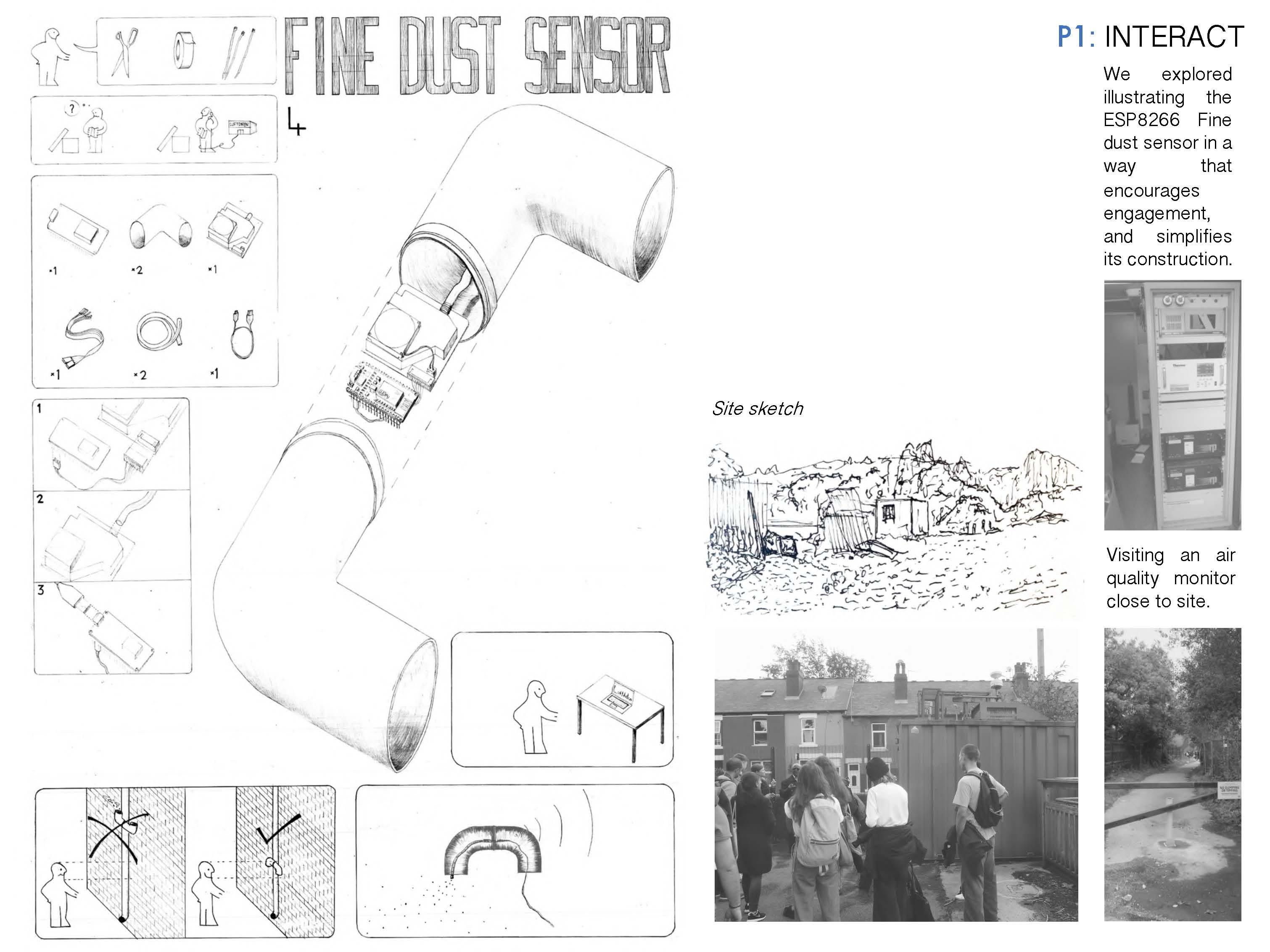
Low Tech Air Quality Sensor – Thomas Matthews and Patrick Gurmin (p.3)
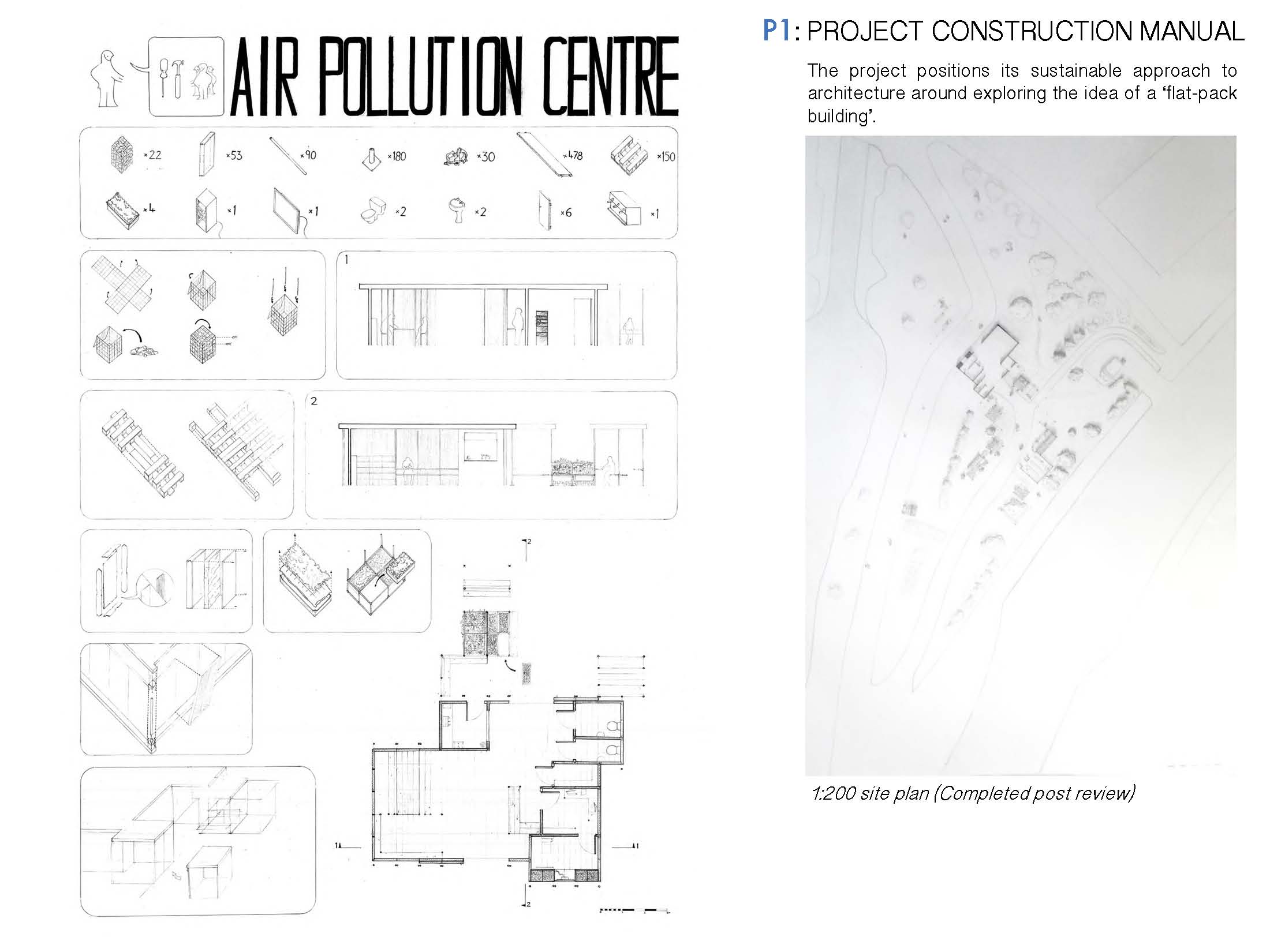
Project Construction Manual – Thomas Matthews and Patrick Gurmin (p.6)
Rachel Dinkel and Ethan Page’s concept was inspired by the Lufft WS700 smart weather sensor. Their intent was to repurpose the abandoned shipping container on the site to minimise any additional transport pollution. Rachel and Ethan designed a combined research station and educational facility.
Below are some of the plans and drawings from the finished project.
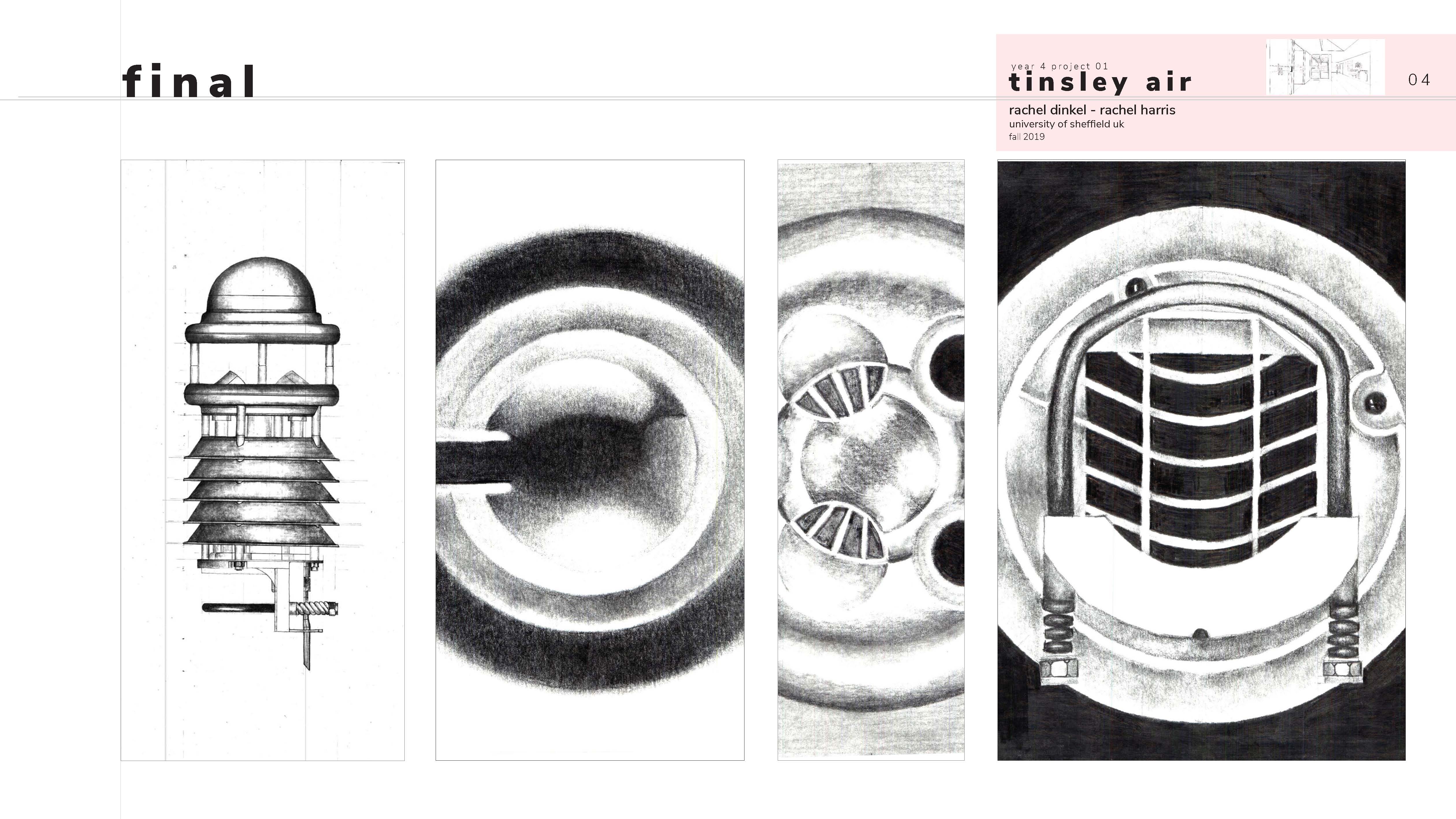
Measuring Equipment – Rachel Dinkel and Ethan Page (p.5)

Concept Drawing – Rachel Dinkel and Ethan Page (p.7)
All of us at the Urban Flows Observatory were very encouraged to see the level of thought and interest the students put into their projects. We look forward continuing to collaborate closely with the Sheffield School of Architecture.
“Thank you to the Urban Flows Observatory for your time, collaboration, and highlighting to the students a timely climatic concern to inform and influence the development of the next generation of future Architects.” Rachel Harris, Architect and Year 2 Design Tutor

